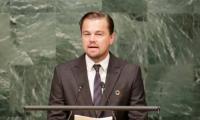LAHORE: Pakistan’s unemployment crisis, affecting all age groups but disproportionately impacting the youth, stems from structural issues such as slow economic growth, lack of industrial diversification, weak job creation and a mismatch between education and market demands.
Unlike developed economies, where an aging population drives demand for younger workers, Pakistan’s labour market is oversaturated. In such a scenario, one might assume that the minimal participation of women in the economic mainstream could be overlooked. However, the absence of a large majority of women from the workforce significantly hampers the country’s economic development.
According to a 2024 report by the World Bank, increasing women’s employment to levels comparable to men’s could boost Pakistan’s economic output by as much as 50 per cent in the long term. Despite some progress, the country’s female labour force participation rate remains well below both the South Asian and lower-middle-income country averages, highlighting significant room for improvement.
There are numerous industrial and economic sectors where greater female participation could unlock economic potential. For instance, value-added textiles are globally dominated by women, yet in Pakistan, women make up only 20-25 per cent of the workforce in this sector. Women are often preferred in the apparel industry due to their proficiency in stitching and higher efficiency. By increasing women’s participation in textiles to the levels seen in Bangladesh, Vietnam or India, Pakistan could significantly boost its textile exports. Expansion in value-added segments such as fashion, sportswear and home textiles has the potential to create millions of jobs.
Pakistan’s information technology (IT) sector is also growing rapidly. While women represent approximately 28.2 per cent of the global tech workforce, according to the World Economic Forum’s ‘Global Gender Gap Report 2024’, their representation in Pakistan’s IT sector is much lower. A study by the Pakistan Software Houses Association (P@SHA) reveals that women make up only 14 per cent of the country’s IT workforce. This underrepresentation is influenced by societal norms, educational disparities and limited access to opportunities in STEM fields.
Globally, women constitute a significant portion of the healthcare workforce. The World Health Organisation reports that women account for approximately 67 per cent of the global health and social care workforce, providing essential services to around five billion people. Pakistani women’s participation in healthcare reflects these global trends to some extent.
In the pharmaceutical sector, women represent over 60 per cent of the global workforce, with projections suggesting that by 2030, 73 per cent of the global pharmacy workforce will be female. However, in Pakistan, female representation in the pharmaceutical industry is significantly lower. A survey by the Pakistan Business Council found that 50 per cent of pharmaceutical companies employ only 10-20 per cent women in their workforce.
Societal and cultural norms, along with perceptions related to the religious dignity of women, contribute to the low female labour force participation in Pakistan. This may explain why, despite having comparable literacy rates in fields such as IT and pharmaceuticals, women are not given a fair share of employment opportunities. In other sectors, low female literacy rates remain a major barrier to workforce participation.
The limited participation of women in Pakistan’s economy not only restricts individual opportunities but also poses a significant obstacle to the nation’s economic growth and development. Addressing this issue requires comprehensive policies aimed at removing societal, cultural and educational barriers to female labour force participation.
KARACHI: Bank Alfalah on Thursday announced that its cardholders can add their credit and debit cards or digital...
Two persons inspecting leather at Hong Kong’s leather trade fair. —aplf website/FileKARACHI: The Trade Development...
A security personnel standing outside a Soneri Bank branch in this image released on July 13, 2022. —...
A woman picks a gold earring at a jewellery shop in the old quarters of Delhi, India, May 24, 2023. —...
A representational image showing a person using a mobile phone as shades of coding appear of the left side. —...
US President Donald Trump holds an executive order about tariffs increase, flanked by US Commerce Secretary Howard...







